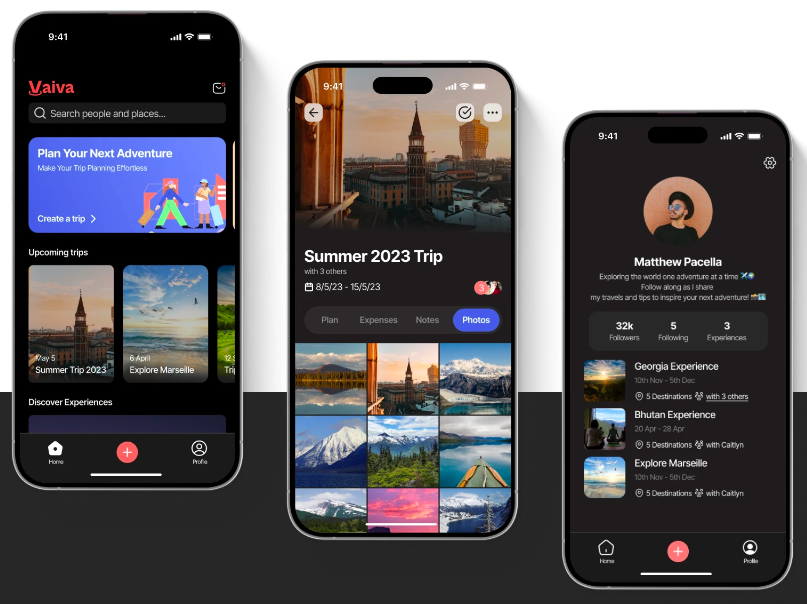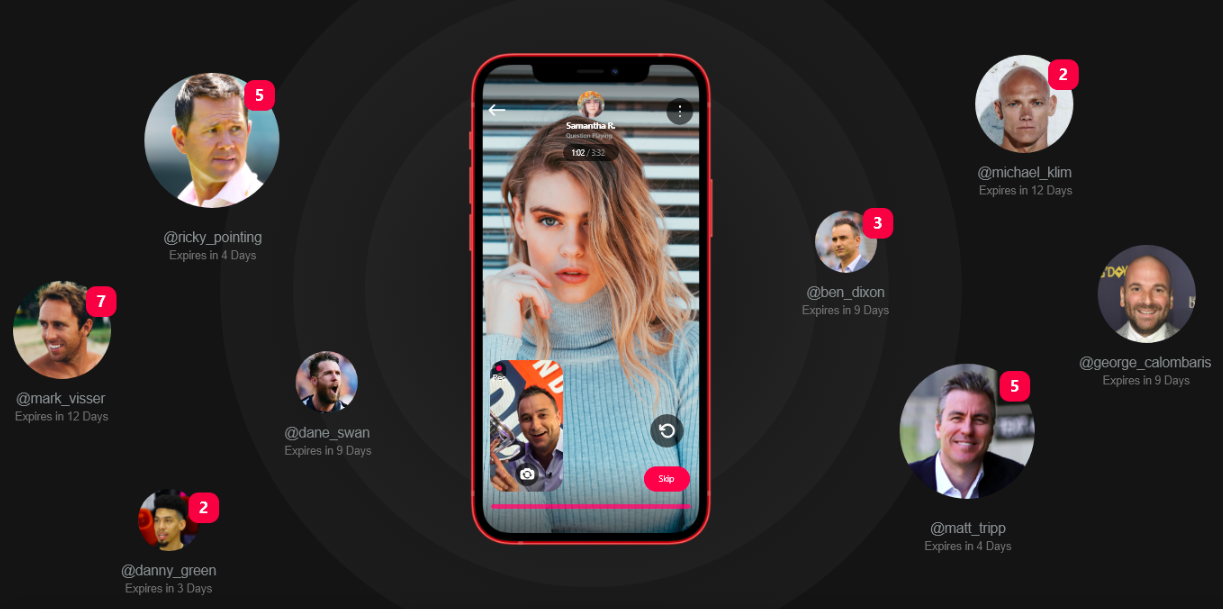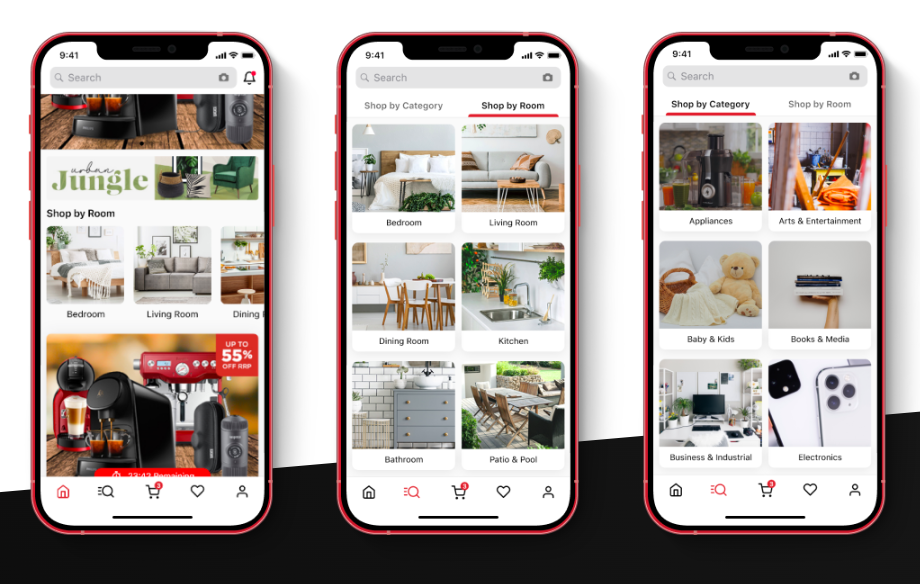How to Find Product-Market Fit for an App: From Idea to Impact

Which comes first: chicken or egg? This age-old question has puzzled us for centuries.
Although many scientists have proven and justified the answer (the egg came first), this philosophical question also has a significant connection to the app business.
Like the chicken and egg dilemma, you often face a similar quandary when launching your app. Should you first identify a market and then develop a product to fit that market, or should you create a product first and then find a market to sell it?
The answer lies in understanding the importance of product-market fit (PMF) and its role in app success.
In this article, I will unpack valuable insights into how to find an app’s product-market fit and how this impacts app growth and sustainability. Read on to ensure your app will be loved by your target users.
What is product-market fit?
Product market fit is a term from Marc Andreessen, an influential Silicon Valley venture capitalist and co-founder of Netscape, which means it’s “being in a good market with a product that can satisfy that market.”
In simple terms, to achieve product-market fit means having a product that solves a problem for a large enough audience to sustain growth and success.
Product-market fit in app development signifies a match between what the mobile app brings to the table and a huge market demand. It shows that the app solves a problem for potential customers. This alignment is indispensable for sustainable success, but to determine product-market fit is complex and requires continuous effort and adaptation.
How to find a product-market fit app in your industry
There are key metrics to determine if a product is a market fit, like high retention rate, Net Promoter Score (NPS), and growing user base, to name a few.
However, these metrics are useful only if the app has already launched and you have gathered data from users.
That said, if everything else starts from a blank canvas, like when you’re developing an app idea, here are actionable items for finding a product-market-fit app in your industry moving forward:
1. Define your target customer
Identifying your core audience is the bedrock of your product.
Your target customer shapes your app’s features and marketing strategies to appeal to your ideal user.
So, how do you pinpoint who your customer is? I’ve listed the key steps below as part of market research.
- ✅ Understand demographics. Demographics are composite sketches of app user segments framed by quantifiable characteristics such as age, gender, income, education level, and job role. Imagine you’re running a luxury shopping app, setting sights on a clientele of females between 30 and 50 years old with sizable incomes and advanced educational degrees—this is an example of demographic targeting.
- ✅ Observe customer behavior. Now this facet moves past mere demographics to capture customer actions—what they buy, how they interact with apps, the pattern of their website explorations, and their loyalty tendencies. For instance, an app noting a trend of eco-consciousness among its audience would prioritize sustainability in its app marketing narratives.
- ✅ Uncover customer needs. The motives behind an app user’s in-app purchases can be practical or driven by emotion, from the quest for an add-on gaming feature to the aspiration to gain the highest score in the community that heightens one’s status. Acknowledging these needs is essential for designing offerings that fulfill real users’ desires.
- ✅ Identify and alleviate pain points. Understanding your audience’s unique challenges and frustrations can distinguish your app—as a light in the dark, so to speak. These pain points steer you to present your offerings as problem-solving heroes. They could manifest as tangible issues, like finding an app to help them find a parking slot, or more esoteric troubles, such as searching for rentals on gowns and party needs.
- ✅ Constructing customer personas. Crafting customer personas is akin to painting portraits. You blend demographics, behaviors, needs, and challenges to breathe life into a representation of your audience. These personas feature names, ages, occupations, and income brackets, as well as the interests, hurdles, and aspirations that relate to your products or services.
Take, for instance, a company offering a fitness tracker app. It might assemble personas like “Fitness Fiona,” who balances work with wellness and seeks quick, potent workout sessions, and “Marathon Mike,” a seasoned runner aiming to clock better race times.
Each persona navigates distinct pathways with unique needs and challenges that steer the app’s design and functionality.
2. Identify underserved customer needs
When you identify underserved customer needs, you recognize specific gaps or unmet requirements of your target audience.
This is not just a gut feeling, although it’s really exciting when you think of how your app idea can make a difference. But at the end of the day, you need to validate if its product-market fit.
So, how does that work? This list will get the ball rolling:
- ✅ Surveys. Deploy surveys across channels like email and social media to tap into potential user desires. Incorporate both open-ended queries for qualitative insights and specific options for quantifiable data. This tactic grants a comprehensive view of what app features may resonate with your audience.
- ✅ Interviews. Conduct interviews through face-to-face, phone, or video to gain a deeper grasp of user expectations. These discussions can unveil the reasons behind your audience’s inclinations, offering rich, actionable insights beyond what surface-level surveys may capture.
- ✅ App reviews and feedback. Check app store reviews and discussions in forums concerning similar apps. Public opinion often sheds light on common user frustrations and desired improvements. This outlines clear paths for your app to fulfill these voids.
Sometimes, finding that underserved app user needs can be just right in front of you or within you. This could be your passion — your true north, like how Claudia Dean did it.
From the prestigious stages of the Royal Ballet to the innovative world of tech entrepreneurship, Claudia Dean’s artistic excellence has taken on a new avatar.
A prodigy who graduated from the Royal Ballet School and attained the rare honor of dancing with the Royal Ballet Company—becoming one of just six Australians to do so—Claudia is no stranger to the spotlight.
Our team was approached by Claudia, brimming with a vision to create an iOS app and Android app that would not only mirror her esteemed status in the ballet realm but also empower upcoming dancers with the necessary tools for honing their skills. 
The outcome of our synchronized efforts was nothing short of a sensation. Upon release, the ballet training mobile application captivated a stunning audience, securing over 10,000 downloads within just its inaugural week. It emerged as a trending name, drawing significant attention and earning a formidable 4.9-star rating across more than 200 reviews on the Apple App Store.

Source: Apple App Store
With her app, Claudia continues to inspire and train the next generation of dancers, each download a step towards someone’s dream, each review a chorus of applause for a success story well-danced.
3. Define your value proposition
There are 1.96 million apps on the Apple App Store. What would be your unique product and value proposition to stand out in the crowded mobile app stores?
Narrowing down the value proposition will help you determine if your app is a product-market fit.
A value proposition sets you apart from similar apps because it addresses your targeted app users’ specific needs and pain points. When your app user profile or persona is crystal clear, crafting a unique value proposition is relatively easier because your messaging is also focused on their needs.
A successful app often hinges on crafting a compelling value proposition that resonates with users.
Here are a few examples to give you an idea:
- 💡 Netflix, the juggernaut of the moving streaming service industry, tailors its viewing experience to the individual tastes of its users. It’s all about personalized movie streaming catered to you.
- 💡 “Music for everyone” is the clarion call of Spotify, and it lives true to its promise. Whether tuning in with a free account or opting for a premium subscription, access to an expansive universe of songs, podcasts, and playlists awaits.
- 💡 Uber has redefined what we expect from transportation by offering a seamless and hassle-free alternative to the traditional taxi experience. The beauty of Uber lies in its unbridled simplicity—you tap your phone, and a ride appears with no more exasperating phone calls or payment worries.
- 💡 Slack promises to accelerate work by fostering communication that’s as enjoyable as efficient. What cements Slack’s position as a heavyweight in collaboration tools, however, is its ability to mesh neatly with numerous other apps. It enhances the collaborative experience with real-time messaging and file-sharing capabilities that are delightfully intuitive.
Now, you might think that I’m a bit biased by providing you with examples of tech behemoths that have been valued at billions of dollars due to their app successes.
First, let me tell you the humble beginning of Matthew Pacella of Vaiva.
Meet Matthew Pacella, a legal expert with a passion for exploring new places, became exasperated with the cumbersome task of trip planning using antiquated methods.
The arduous process of toggling through myriad web apps like Google Sheets for travel arrangements felt incredibly taxing and starkly disconnected from the abundance of contemporary apps.
🚀 Venturing into a deep research escapade, Matthew was on a quest for a seamless solution. The aim was crystal clear: to streamline trip management into one cohesive platform, ditching the need for constant app-switching.
Little did he know that this quest would lead to a revelation in travel planning that blends simplicity with smart technology.
Enter Appetiser, where Vaiva found its perfect cultivating ground. With our alignment on its promise and growth potential, Matthew became more than just a client—he was a core part of the team.

His hands-on approach, coupled with his genuine respect for constructive challenges, set the stage for a dynamic dialogue that fuels Vaiva’s exceptional app development.
The partnership thrived on synergy, fostering features that make Vaiva not just a travel app but a hub for social sharing, exploration, and community bonding—setting a new industry benchmark.
📣 Vaiva’s story is a testament to the power of recognizing everyday problems and turning them into innovative solutions. It’s a unique value proposition that stemmed from a simple problem. You don’t need to be a tech behemoth to make this happen.
I do believe there’s no shortage of unique selling propositions today. When you focus on serving people first—addressing their needs and pain points—you could flesh out different angles to ensure your app is product-market fit.
And you can go the extra mile when you do the next thing.
4. Develop a minimum viable product (MVP)
The quest to introduce a new app to the market can be as ambitious as it is fraught with uncertainty.
But with a minimum viable product (MVP), this lean approach allows you to debut an app with just enough features to engage those early users while offering valuable insights into the market’s pulse.
The MVP approach significantly reduces the time it takes to launch your app. By focusing on core functionalities, app developers can quickly move from concept to launch, allowing for an earlier entry into the market.
According to a study by McKinsey & Company, businesses that accelerated their MVP development process were 1.5 times more likely to exceed their business goals.
There’s also a unique approach to finding a product-market fit in a double whammy like how Vello did it: create an interactive prototype to raise funds, which was a core element in his investor pitch.
In a display of innovation meets ambition, AFL icon Ben Dixon turned to Appetiser with a striking vision in mind.
Faced with the initial funding challenge, the collaboration started with Appetiser crafting world-class app designs as the launchpad. These app designs were meticulously woven into an interactive prototype, which would become the pivotal piece of Dixon’s investor presentation.

The result? A resounding success—garnering over $1 million in capital for Vello. But the success didn’t stop at financial backing.
Appetiser’s exemplary work also helped Dixon in forging alliances with a league of over 1,000 celebrated personalities, including the likes of Ricky Ponting and George Calombaris. Together, these stars boasted a staggering collective fan base exceeding 150 million, propelling Vello into unprecedented popularity.
This partnership encapsulates more than just a business transaction. It underscores Appetiser’s pivotal role in navigating the competitive waters of product-market fit, culminating in a true success narrative for Vello.
5. Test your MVP with target customers
Testing your MVP app with target customers refers to gathering customer feedback and insights by allowing real users who represent your target market to interact with and provide their opinions on the initial version of your app.
This mobile app testing phase is essential in validating assumptions, identifying mobile usability and accessibility issues, understanding user preferences, and gauging overall satisfaction before investing further resources into the development of the full app.
This is what Sean Senvirtne, founder and CEO of MyDeal, did. He understood that testing things out was the only way to know how the market would respond.
Sean fearlessly bootstrapped his vision, paving the way for the MyDeal app that changed the trajectory of mobile shopping to greater heights.

In 2020, a collaboration was born to propel MyDeal to reach over 883,000 active customers with an unrivaled shopping experience. MyDeal outshined industry giants like H&M and IKEA, setting a new standard for excellence.
The remarkable success continued as the startup made its mark on the Australian Stock Exchange, with the app playing a pivotal role in the public offering. Fast forward to 2021, where a staggering 111.1% increase in gross sales solidified MyDeal’s position as a market leader.
Then Woolworths acquired 80% of the online marketplace, valuing the company at an astounding $243 million in 2022.
As for Sean, his efforts in bootstrapping for success were not a waste. In fact, he was a national finalist in EY Entrepreneur Of The Year 2023 Australia.
✨ You’ll learn from MyDeal’s story that sometimes, just putting your app out there to test the waters can unlock opportunities. It takes a great leap of faith with calculated risks.
But it doesn’t end there. Once you capture a wealth of data and feedback directly from app users, you must take the next action point in the next section.
6. Iterate based on feedback
When iterating based on feedback, you systematically refine and evolve your app in response to insights and suggestions gathered from users within your target market.
This iterative approach involves incorporating feedback from existing customers who have interacted with your app, identifying pain points, understanding preferences, and adjusting features to better align with user needs and expectations.
By continually iterating based on feedback, you can fine-tune your app to address specific user requirements, enhance usability, and optimize the overall app interface experience.
This iterative cycle allows you to test hypotheses, validate assumptions, and make data-driven decisions that increase the likelihood of achieving product-market fit—a state where your app effectively satisfies a significant market demand within your niche.
At Appetiser, we have this stage from our Appetiser Prover Process™ called APEX testing or app experience testing, where our engineers spearhead this process.
Clients are guided to app testing, where real users interact with the app to help them find product-market fit to receive the attention it needs.
This method also allows clients to assess how they would scale the app in the long run.
🚀 Feedback from real app users becomes the driving force for developers and engineers to focus on app improvements, hopefully, until almost perfect.
You need app partners to find a product market fit in your industry
When building apps, understanding and achieving product-market fit is a pivotal milestone for success. By comprehending the nuances of your target audience and aligning your app with their needs, you pave the way for sustainable app growth and market acceptance.
An app partner like Appetiser offers expertise and resources, offering straightforward, results-oriented strategies essential for navigating this exciting industry.
Collaborating with growth partners not only accelerates your journey toward product-market fit but also opens doors to new opportunities and avenues for expansion.
The genesis of an idea holds the power to spark profound impact and transformation within your industry. By harnessing creativity, digital innovation, and strategic partnerships, your app has the potential to disrupt markets, capture hearts, and carve a lasting legacy in your industry.
Book a call with our product strategists today and watch as your idea blossoms into a force of positive change and innovation.

Maria Krisette Lim is a Content Marketing Specialist with 14 years of experience producing web and print ad content. Krisette has a BSBA degree, major in Business Management and Entrepreneurship. When she’s not tinkering with words and punctuation, she’s either curled up with a book while sipping hot tea, playing with her toddler, or tinkering with website builders.


